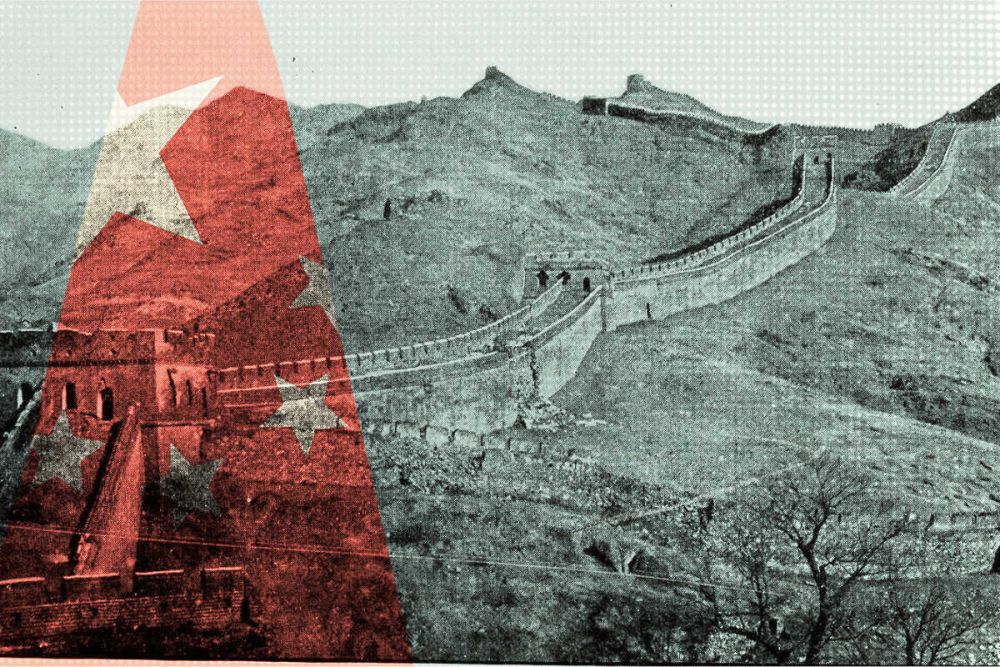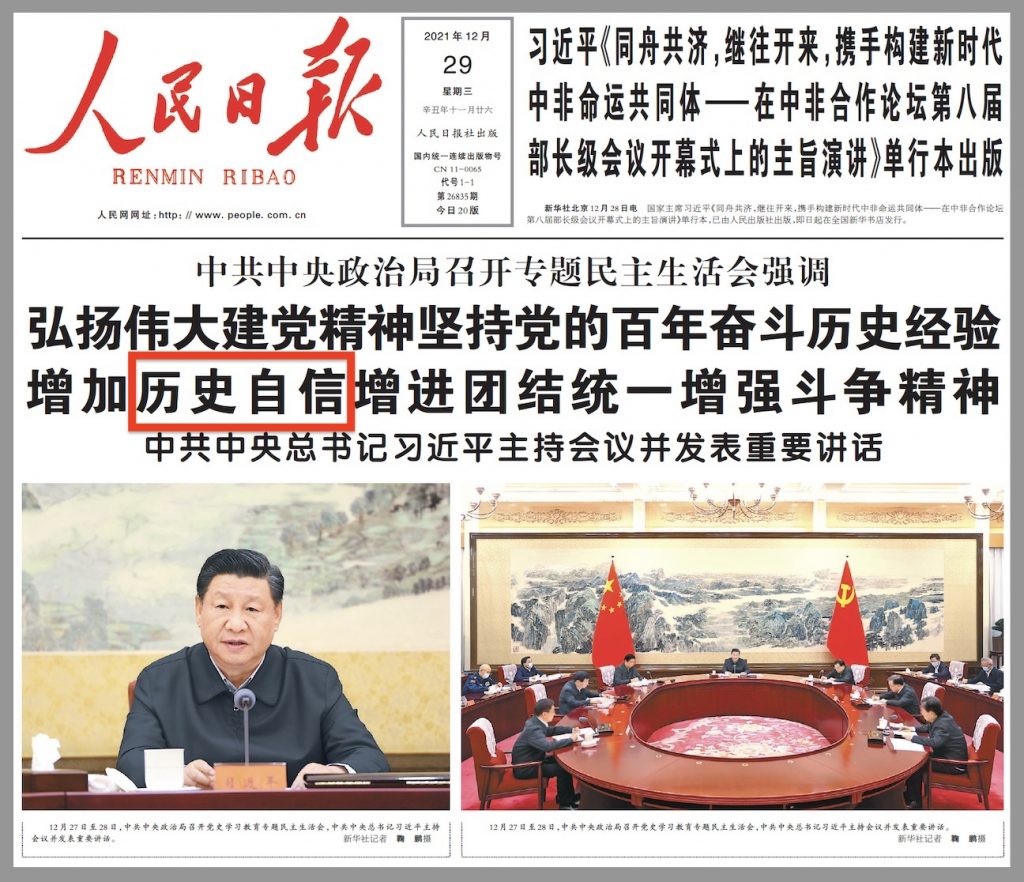China Newspeak
And Then There Were Five

China’s Great Wall, photographed in 1900. Public domain image available at Wikimedia Commons under CC license.
Confidence seems to be proliferating at the top-most levels of the Chinese Communist Party. When Hu Jintao delivered his political report to the Party’s 18th National Congress back in November 2012, the outgoing leader spoke of three points of self-confidence that were to propel the CCP into the future. “The whole party must firmly uphold confidence in the path, in the theory and in the institutions [of socialism with Chinese characteristics],” Hu said.
As the Xi Jinping era dawned, then, there were just “Three Confidences,” or sange zixin (三个自信), at the heart of what has been termed China’s “confidence doctrine.” By 2014, however, a fourth confidence had crept into the formula. The new buzzword was “cultural confidence,” or wenhua zixin (文化自信). The Party needed to have faith not only in the rightness of its policies, governance and theoretical foundations, but also in its identity – to be found in a combination of 5,000-odd years of Chinese culture (中华文化) and the rich revolutionary legacy of the CCP itself.
The “Four Confidences” were affirmed as an integrated formula in Xi Jinping’s speech to commemorate the 95th anniversary of the CCP in 2016, and at the 19th National Congress the year after they were included in amendments to the Party Charter (党章). The “Four Confidences” have been codified ever since as:
- “confidence in the path” (道路自信) [of socialism with Chinese characteristics]
- “confidence in the theory” (理论自信) [of socialism with Chinese characteristics]
- “confidence in the system” (制度自信) [of socialism with Chinese characteristics]
- “confidence in the culture” (文化自信) [of socialism with Chinese characteristics]
But this month, confidence has advanced again. The top headline on the front page of the CCP’s official People’s Daily newspaper today included a fifth confidence, marking the further advancement of the confidence doctrine to accommodate this year’s 100th anniversary of the CCP and last month’s Resolution of the Central Committee of the CCP on the Major Achievements and Historical Experience of the Party over the Past Century. The new buzzword is “historical confidence,” or lishi zixin (历史自信).

This phrase was mentioned by Xi Jinping in his “important speech” (重要讲话) this week to the latest “democratic life meeting” (民主生活会), an event at which members of the CCP Politburo are meant to criticize and assess their own performance. In the speech, promoted in today’s People’s Daily, Xi stressed the importance of “drawing wisdom and strength from the Party’s century-long history.”
The appearance of “historical confidence” in a front-page headline in the People’s Daily signifies its emergence in strength, as a phrase likely to continue to rise in 2022. But the first prominent appearance of the phrase came in mid-November as Huang Kunming (黄坤明), the head of the Central Propaganda Department, used it to convey the “spirit” of the 6th Plenum in a video conference with propaganda leaders across the country. Prior to Huang’s address in November, “historical confidence” had appeared just once in the People’s Daily, in an essay published in July 2016 and written by Huang Yibing (黄一兵), the deputy director of the Third Research Department of the Central Party History Research Office.
The “Five Confidences” (五个自信) is definitely a phrase to look out for in 2022.





















